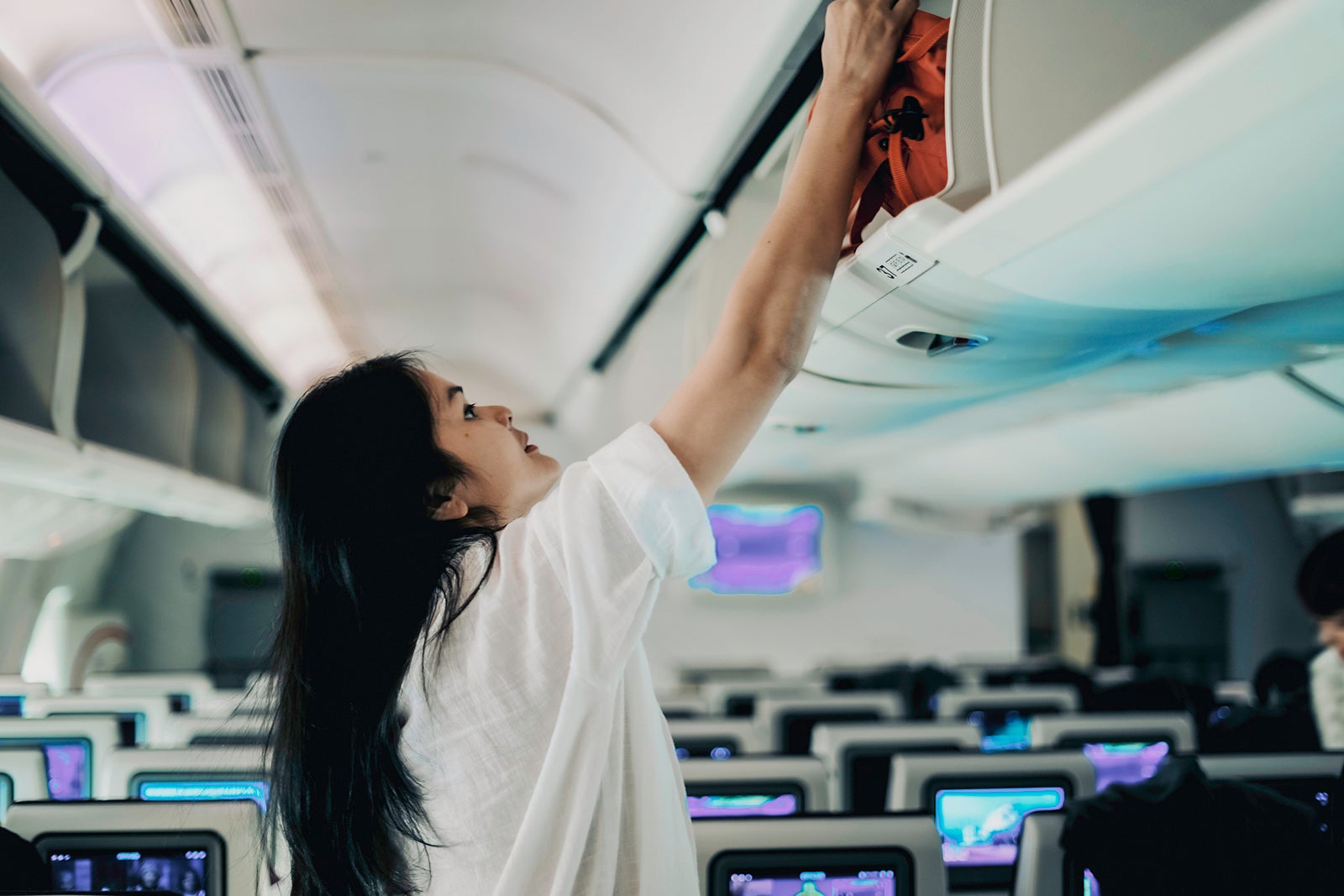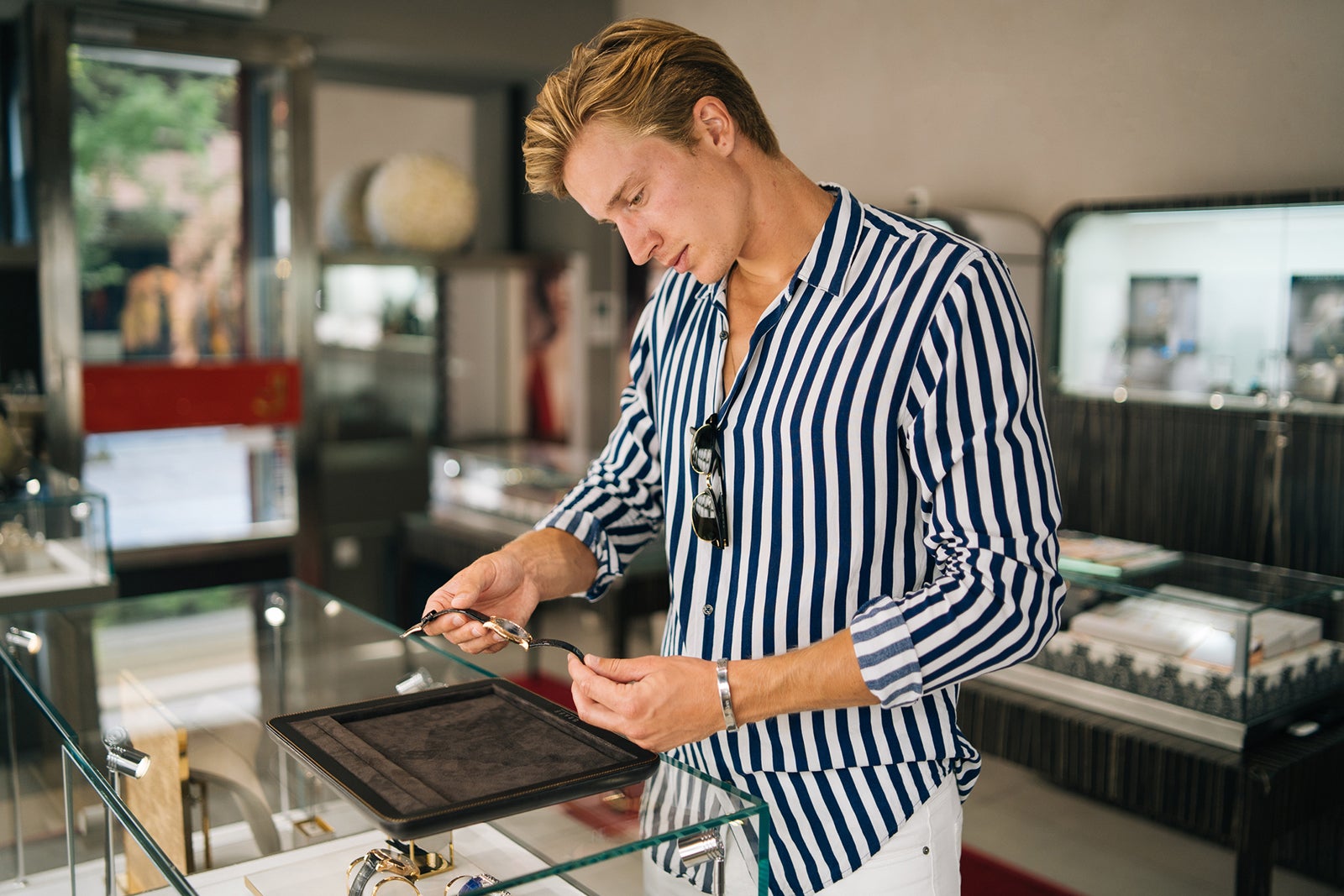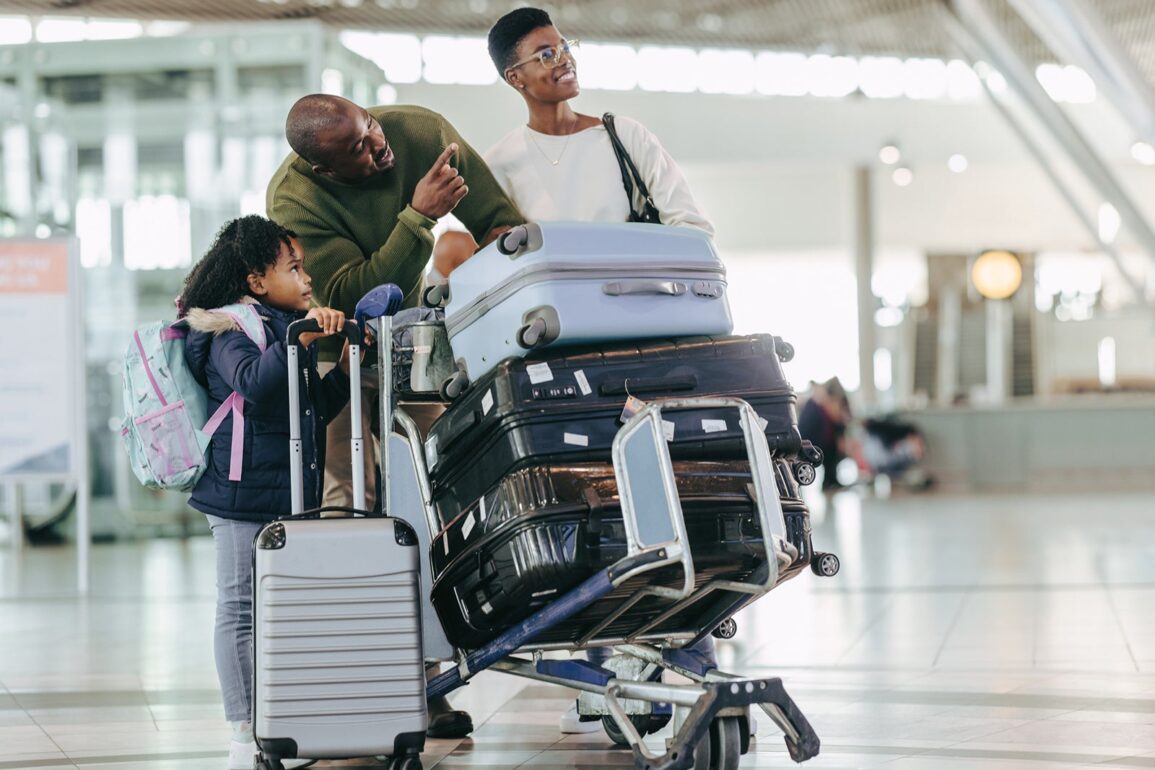Picture this: You’ve just stepped off a red-eye flight. You’re tired and just want to get through customs, grab an Uber, drop your bags and dive into bed. But then border security pulls you aside to search your luggage.
That’s exactly what happened once when I rolled up to security after a trip to Paris with my boyfriend. My carry-on bag was full of secondhand luxury handbags I’d been collecting for 10 years. I spent the next two hours with border security arduously searching for long-gone eBay receipts and photos deep in my iCloud storage to prove my handbags were not purchased abroad.
Traveling with luxury or expensive luggage can quickly raise suspicions when clearing customs. However, there are simple ways to ensure you’re prepared in advance.
Here’s how to streamline crossing the border with big-ticket items purchased abroad or at home, from navigating value-added tax returns to purchasing the right travel insurance.
Related: 9 great suitcases worth the checked-bag fee
How to care for valuable items while traveling
Document everything
If you plan to bring your favorite handbag or high-end luggage with you out of the country, be prepared to prove to border security that you purchased your bag in the U.S. If you’re returning from Europe, security agents will likely be on high alert, and if you’re schlepping hundreds of dollars of carry-on items with you, you might be pulled aside for extra screening.
The easiest way to keep documents in order is to take photos of your receipts if you have them. It’s worth creating an album on your phone that includes photos of your items (with dates), receipts and other relevant information. If you cannot prove you purchased your items before your trip, border security has the right to seize them and charge duty fees.
If you want to guarantee a stress-free return to the U.S., you can register your items with U.S. Customs and Border Protection before you depart so you have indisputable proof that you owned them before you left.
The Certificate of Registration for Personal Effects Taken Abroad form (CBP Form 4457) is available at any CBP office or international airport. It requires a description of your item and the serial number or date code.




Daily Newsletter
Reward your inbox with the TPG Daily newsletter
Join over 700,000 readers for breaking news, in-depth guides and exclusive deals from TPG’s experts
Get the right travel insurance
Whether you have home insurance, group health insurance at the office or something in between, read your policy’s fine print before heading off on your trip. Often, these built-in insurance packages only include up to a few thousand dollars’ worth of luxury accessories. Typical coverage for high-value items is usually around $1,000 to $2,500, and there will often be a single-item limit. Many items (like wallets and suitcases) may be excluded.
Related: TPG’s comprehensive guide to independent travel insurance — including coronavirus coverage
If your home or travel insurance policy coverage isn’t enough to cover all the goods you’re traveling with, consider insuring each piece separately. If the item is lost (including lost checked luggage), stolen or damaged, you’ll be reimbursed for its full value with no deduction for depreciation or gentle use.
Maximize your carry-on space


Large luxury handbags can be heavy and tempting to pack in checked luggage. However, even if you chose a higher insurance limit, I recommend keeping your big-ticket items in your carry-on bag rather than your checked luggage. Damage and loss can happen. Even if you have great insurance, it’s always a good idea to try to avoid going through the process of claiming a loss when you can.
Related: Keep calm and carry on: The best carry-on luggage for every kind of trip
To maximize your carry-on space, pack one larger bag as your designated nesting bag. Your evening and day bags should fit inside. If that’s not enough, consider bringing a rolling carry-on.
Invest in Magic Erasers and a reusable grocery bag
If you can help it, try not to bring the dust bags that come with your luxury goods. While they make a great protective layer, they’re sure to raise red flags if you get pulled aside while clearing customs.
A pristine dust bag suggests you recently purchased your goods. Even if you have documented receipts and photos to prove you bought your items in the U.S. or on previous trips, if you can avoid being questioned entirely by border security, it’s definitely worth it.
Instead, pack a few reusable grocery bags for emergency use. These bags serve many purposes. They’re great for covering your items while going through airport security lines and storing them beneath your seat during takeoff and landing. Concerned about your items getting damaged? Pack a Magic Eraser to take care of any unexpected nicks or stains on the spot.
Use Apple AirTags or an equivalent luggage tracker
In some situations, you might be unable to pack your valuables in your carry-on luggage and have no option but to keep them in your checked luggage. In these instances, I recommend traveling with at least one Apple AirTag or a similar luggage tracker.
Related: How to track your luggage with Apple AirTags
Luggage is often lost or damaged. A tracking device such as an Apple AirTag can help you locate your belongings after the fact — at a busy baggage carousel or when you must provide information to the airport staff to help locate your belongings. We’ve written at length about the value of Apple AirTags when traveling. Many of TPG’s staff won’t travel without them.
Consider security devices that you can travel with
Although, to some extent, you will need to take a leap of faith with the security offered by the property you’re staying at, there are certain products that can enhance your safety.
First, make sure that a safe is included in the room when you book your hotel or rental. When you’re there, make sure that it’s working properly, and if you’re unsure of how to use it, be sure to ask staff at check-in. While you won’t often be able to store large items in the safe, it should be good for smaller items, passports and cash.
Next, consider bolstering security when you’re in your room.
While they’re not much use once you’ve vacated your room, a door stopper alarm can offer great peace of mind when you’re sleeping. This AceMining Door Stopper Alarm is only $9.99 and is designed to react if someone tries to enter any door it is being used on and gives off a 120dB siren when activated. The same brand also sells this portable door lock (currently on sale on Amazon for $14.99, usually $20.99). The lock is designed to fit most doors and offers an extra layer of security for when you’re concerned about the reliability of the locks on your hotel room door.


You might also invest in an antitheft bag for when you’re on the go and carrying expensive items. This one by Pacsafe has reinforced zippers and cut-proof material to protect you against pickpockets. It also houses RFID-blocking protection for credit cards and can be securely locked to fixtures. It’s currently $149.95 on Amazon.
How to bring a new purchase home


Bring your passport while shopping
Most European and Asian countries offer VAT refunds for big-ticket shopping. For example, in France you need to spend a minimum of 175 euros (about $188) at one store to qualify. If you plan to pick up a high-end souvenir, bring your passport when shopping to prove you’re a nonresident and eligible for a refund.
Related: How to get your maximum VAT refund when traveling abroad
If you forgot your passport, we highly recommend putting your items on hold and returning to your hotel to retrieve your passport.
Save and document every receipt
In Europe, you’ll receive a different VAT envelope at every store where you make a qualifying purchase, and you must hold onto them until you’re about to leave the country. At that time, your paperwork will be stamped by customs at a tax refund counter at the airport. Plan for enough time before your flight to visit the refund counter — they are sometimes hard to find and can be extremely busy.
Remember that you technically cannot use your new purchases until you leave the country, or they will no longer qualify for the refund. Keep your new item in its dust bag and box, and ensure all tags and receipts are in order.
When you touch down in the U.S., be sure to answer the questions on the arrival card honestly.
“In the event customs officers want more information or some idea of the values, it is always a good idea to have supporting documentation in the form of valuations or receipts,” suggests Matt Woodley, an international moving expert at MoverFocus.com. “There’s no reason to provide more information than necessary.”
Consider shipping your items back
If you’re purchasing big-ticket items that you’d prefer not to take through the airport and onto the plane, you’re legally allowed to ship back any luxury goods — but you’re still required to declare them.
“You can ship up to $200 worth of goods to yourself duty-free,” said Darrin Giglio, chief investigator of North American Investigations. “However, if something is worth $500, you’ll pay $500 instead of $300.”
When it doubt, declare it
Here’s where things can get a little dicey. Do you have to declare that secondhand Louis Vuitton wallet? The answer is almost always yes. In most cases, you can bring up to $800 worth of goods into the U.S. without paying any duty fees.
However, even if your luxury purchase is well under that price threshold, you also have to consider small purchases, like clothing, souvenirs and alcohol. If you think you may be pushing the limit, make a detailed list of your purchases to share with your customs agent.
Related: What your luggage brand says about you
Note that ‘duty-free’ items aren’t always duty-free
“If you have purchased any items ‘duty-free’ whilst you’ve been away and exceeded the limits imposed in the country you are entering, be prepared to pay duty and/or tax,” Woodley explained. “Customs officers do have discretionary powers, but it is unlikely with luxury/high-ticket items that the officers will give you relief … If you can afford to purchase the items, you can afford to pay the resultant duty/tax.”
Bottom line
Traveling with expensive items doesn’t need to be stressful, and there are multiple ways to protect yourself from theft or from being questioned about your purchases when you pass through customs. Additionally, if you’re planning to purchase luxury goods while you’re traveling, it’s important to keep hold of receipts and proof of purchase for when you’re returning home — and remember, depending on the cost of your purchases, you may need to pay additional taxes when you reach the airport.
This post was originally published on this site be sure to check out more of their content.





